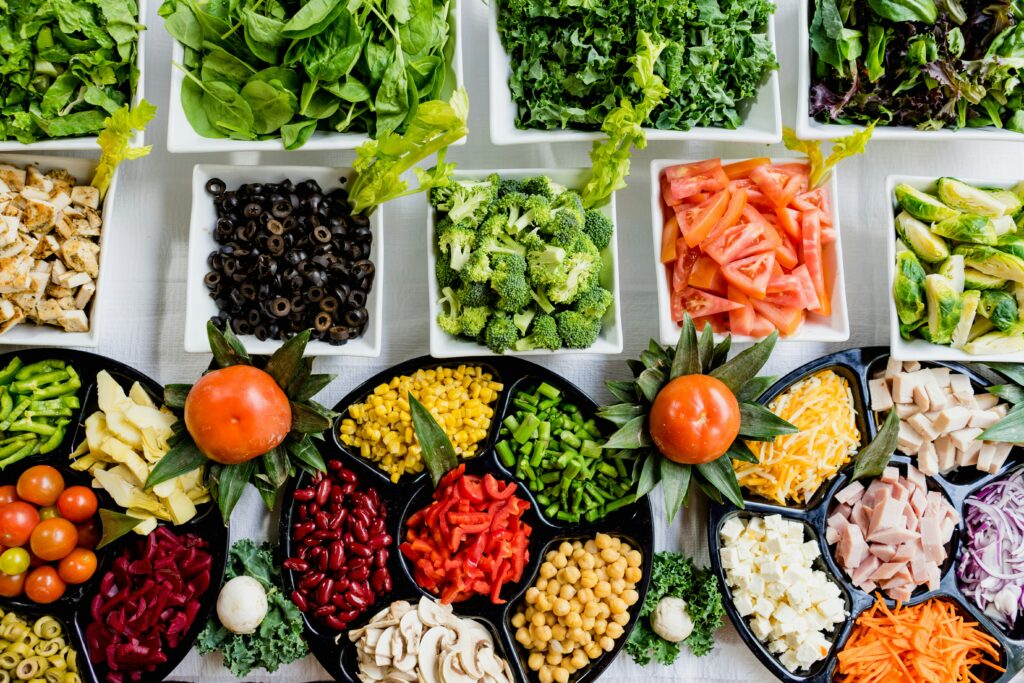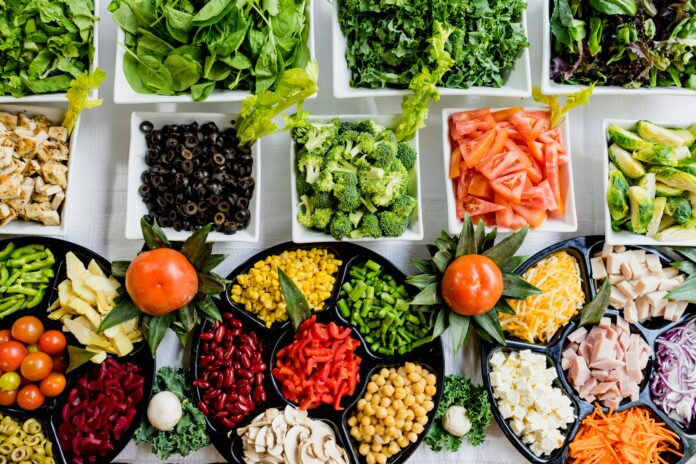The low-carb, whole-food diet is an approach focused on reducing refined carbohydrates and processed foods in favor of whole, unprocessed foods. By emphasizing nutrient-dense ingredients, this diet supports weight management, balanced blood sugar, and overall health without the hunger or restrictions often associated with other diets. In this guide, we’ll cover the fundamentals of a low-carb, whole-food diet, its benefits, foods to include, and how to get started.
What is a Low-Carb, Whole-Food Diet?
A low-carb, whole-food diet prioritizes natural foods that are low in carbohydrates and high in essential nutrients. Unlike other low-carb diets, this approach avoids ultra-processed, packaged foods—even those labeled “low-carb.” Instead, the focus is on high-quality proteins, healthy fats, vegetables, and low-glycemic fruits that provide long-lasting energy and prevent blood sugar spikes.
Macronutrient Breakdown:
- Carbohydrates: Typically 10-30% of daily intake, focused on low-glycemic vegetables, nuts, seeds, and some berries.
- Proteins: 20-30% of daily intake, sourced from lean meats, fish, eggs, and plant-based proteins.
- Fats: 40-60% of daily intake, emphasizing healthy fats from avocados, nuts, seeds, and olive oil.
Health Benefits of a Low-Carb, Whole-Food Diet
The benefits of this diet go beyond weight management. Here are some of the top advantages:
- Improved Blood Sugar Control
By cutting out high-carb, refined foods, this diet helps to stabilize blood sugar and prevent spikes. This can be particularly beneficial for people with type 2 diabetes or pre-diabetes. - Sustained Weight Loss
Focusing on whole foods, protein, and healthy fats keeps you fuller longer, making it easier to naturally reduce caloric intake. Many people find it easier to lose and maintain weight on a low-carb, whole-food diet than on traditional calorie-restricted diets. - Increased Energy and Mental Clarity
Low-carb, whole foods avoid the sugar highs and crashes associated with refined carbs. With balanced blood sugar, you’ll enjoy sustained energy and improved mental focus throughout the day. - Reduced Inflammation
Whole foods, especially leafy greens, nuts, seeds, and fatty fish, contain anti-inflammatory properties that reduce inflammation. This can alleviate symptoms of joint pain, headaches, and even some autoimmune disorders. - Heart Health
This diet can help improve heart health by increasing levels of HDL (good) cholesterol and lowering triglycerides, two key indicators of cardiovascular health. - Hormone Balance
Reducing processed foods and added sugars helps regulate insulin, cortisol, and other hormones involved in stress response, metabolism, and mood stabilization.
Foods to Include on a Low-Carb, Whole-Food Diet
The foundation of this diet is nutrient-dense, whole foods that offer essential vitamins, minerals, and fiber without added sugars or artificial ingredients. Here’s what to include:
High-Quality Proteins:
- Meats: Grass-fed beef, lamb, and pasture-raised pork
- Poultry: Free-range chicken and turkey
- Fish and Seafood: Wild-caught salmon, trout, sardines, and shellfish
- Eggs: Pasture-raised or organic eggs, rich in essential fats and proteins
Healthy Fats:
- Avocados and Olives: Great for heart-healthy monounsaturated fats
- Nuts and Seeds: Almonds, walnuts, chia seeds, and flaxseeds, high in fiber and healthy fats
- Oils: Cold-pressed olive oil, coconut oil, and avocado oil
- Butter and Ghee: Preferably from grass-fed cows, these offer fat-soluble vitamins
Low-Glycemic Vegetables:
- Leafy Greens: Spinach, kale, arugula, and swiss chard
- Cruciferous Vegetables: Broccoli, cauliflower, Brussels sprouts, and cabbage
- Other Non-Starchy Veggies: Zucchini, peppers, cucumbers, mushrooms, and asparagus
Low-Sugar Fruits:
- Berries: Strawberries, blueberries, blackberries, and raspberries are low in sugar and high in antioxidants
- Citrus: Lemon and lime, which can be used to flavor foods and drinks
- Avocado and Olives: These fruits are low in carbs and high in healthy fats
Other Foods:
- Herbs and Spices: Basil, oregano, turmeric, and ginger add flavor and antioxidants
- Nuts and Seeds: Almonds, walnuts, chia seeds, and flaxseeds provide healthy fats, fiber, and plant-based protein
- Fermented Foods: Sauerkraut, kimchi, and yogurt with live cultures support gut health by providing beneficial bacteria
Foods to Avoid on a Low-Carb, Whole-Food Diet
To stay on track with this diet, it’s essential to avoid foods that are high in sugar, refined carbs, and unhealthy fats. Here’s what to limit or avoid:
- Sugary Foods and Beverages: Soda, candy, baked goods, and fruit juices
- Refined Carbs: White bread, pasta, rice, and other processed grains
- Trans Fats and Hydrogenated Oils: Margarine, processed vegetable oils, and most packaged snacks
- High-Carb, Processed Snacks: Chips, crackers, and cookies
- High-Sugar Fruits: Bananas, mangoes, grapes, and pineapples (limit these as they are higher in natural sugars)
How to Start a Low-Carb, Whole-Food Diet
Transitioning to a low-carb, whole-food diet can be simple if you follow a few basic steps:
- Plan Your Meals
Decide on your meals for the week and focus on easy, low-carb recipes with plenty of fresh vegetables, lean proteins, and healthy fats. - Read Food Labels
When shopping, read labels to avoid added sugars, preservatives, and hidden carbs in packaged foods. Look for foods with minimal ingredients. - Stock Up on Whole Foods
Fill your pantry with low-carb essentials like olive oil, nuts, seeds, and low-glycemic vegetables. Keeping these on hand makes it easier to prepare nutritious meals. - Stay Hydrated
Drinking enough water is essential to support digestion and help eliminate waste, especially on a low-carb diet. Aim for at least 8-10 glasses a day. - Eat Mindfully
Practice mindful eating by listening to your body’s hunger cues, and avoid eating when distracted to help avoid overeating.
Sample Low-Carb, Whole-Food Diet Meal Plan
Here’s an example of what a day on a low-carb, whole-food diet might look like:
- Breakfast: Scrambled eggs with spinach and avocado, drizzled with olive oil
- Lunch: Grilled chicken salad with mixed greens, cucumbers, bell peppers, olives, and feta, topped with a lemon-olive oil dressing
- Dinner: Baked salmon with a side of steamed broccoli and cauliflower rice
- Snacks: A handful of almonds or Greek yogurt with a few berries
Common Challenges and Tips for Success
- Overcoming Sugar Cravings: It’s normal to crave sugar when first transitioning. Keep healthy low-carb snacks on hand, and try flavored teas or sparkling water with lemon to satisfy cravings.
- Dining Out: When eating out, choose grilled or roasted meats and ask for extra vegetables instead of starchy sides.
- Social Events: Prepare by eating a healthy snack beforehand or bringing a low-carb option to share.
The low-carb, whole-food diet is a sustainable and nutrient-rich approach that emphasizes quality over quantity. By choosing fresh, minimally processed foods, you can support weight management, improve energy levels, and boost overall health. With the right balance of proteins, fats, and vegetables, this diet provides lasting health benefits without sacrificing flavor or satisfaction.

Views: 11






